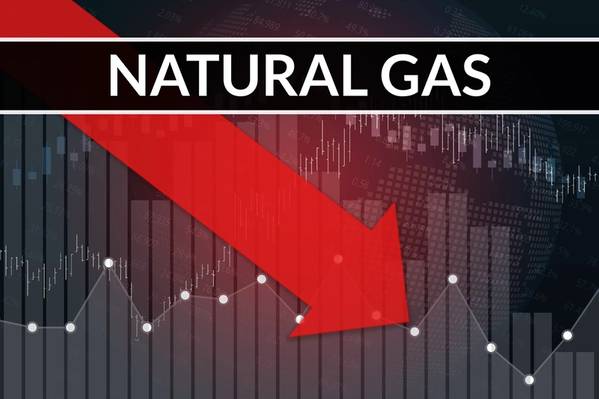
U.S. natural gas futures held near a 21-month low on Tuesday, keeping the contract on track for its second-biggest monthly drop in history, as a decline in output from this week's extreme cold offset forecasts for warmer weather and less heating demand next week than previously expected.
Gas prices have been depressed for weeks due to a growing belief that the country has more than enough gas in storage for the rest of the winter and expectations that Freeport LNG's liquefied natural gas (LNG) export plant in Texas is still weeks away from pulling in big amounts of gas to produce LNG.
Output was on track to drop about 3.4 billion cubic feet per day (bcfd) over the past week or so to a preliminary one-month low of 95.8 bcfd as cold weather and winter storms froze oil and gas wells - known as freeze-offs in the energy industry - in several states, including Texas, Oklahoma, Colorado, North Dakota and Pennsylvania.
Despite this week's extreme cold, temperatures in the U.S. Lower 48 states have averaged about 42.2 degrees Fahrenheit (5.7 Celsius) so far in January, putting this month on track to be the warmest January since 2006 when the mercury averaged a record 42.8 F, according to data from Refinitiv and the federal government.
Front-month gas futures for March delivery remained unchanged at $2.674 per million British thermal units at 10:04 a.m. EST. On Monday, the contract closed at its lowest level since April 2021.
That kept the contract in oversold territory with a relative strength index (RSI) below 30 for a second day in a row and the 15th time this year.
Meteorologists forecast temperatures across much of the lower 48 U.S. states would remain mostly colder than normal through Feb. 4 before turning warmer than normal from Feb. 5 through at least Feb. 15.
With milder weather coming, Refinitiv forecast U.S. gas demand, including exports, would drop from 134.5 bcfd this week to 128.8 bcfd next week. The forecast for this week was higher than Refinitiv's outlook on Monday, while its forecast for next week was lower.
The biggest wild card in the gas market remains when Freeport's export plant will exit a seven-month outage caused by a fire in June 2022.
Freeport is the second-biggest U.S. LNG export plant, and traders expect prices to rise once it starts pulling in big amounts of gas, boosting demand for the fuel. The plant can pull in about 2.1 bcfd of gas daily, about 2% of what U.S. gas producers take from the ground.
Freeport has been pulling in small amounts of gas (about 29 million cu. ft. per day) since Jan. 26 when federal regulators approved the company's plan to start cooling down parts of the plant. But the plant will not start taking in large amounts of gas until it starts producing LNG.
Several analysts have said they do not expect it to start producing LNG until February, March or later.
Some vessels have turned away from Freeport in recent weeks, possibly including Corcovado LNG over the past 24 hours, which seems to be heading for another port.
But several tankers were still waiting in the Gulf of Mexico to pick up LNG from the plant, including Prism Courage (since around Nov. 4), Prism Agility (Jan. 2), Prism Brilliance (Jan. 26) and Kmarin Diamond (Jan. 26).